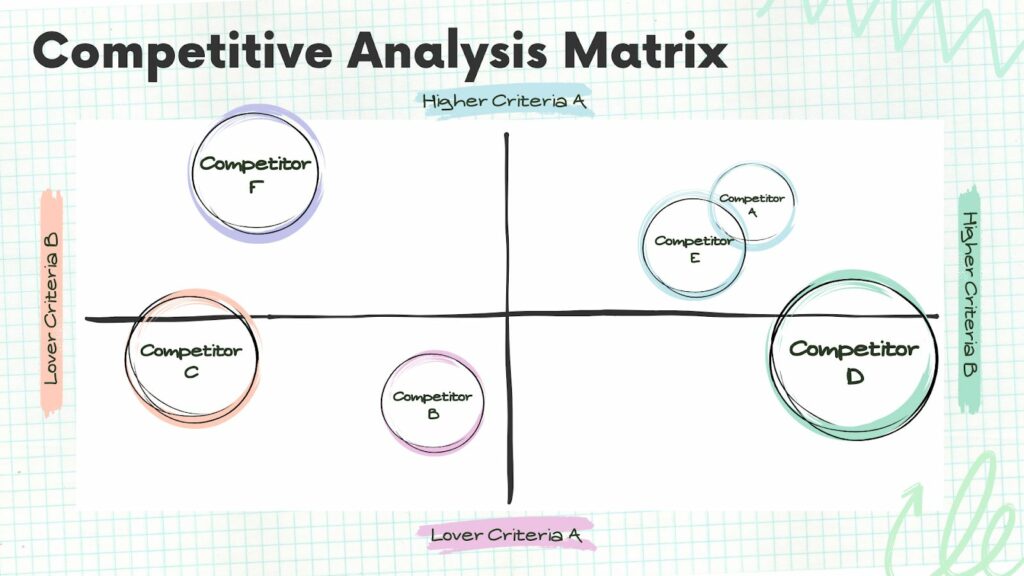Articolo di Nadia Caretti, Business Relationships Developer presso Marcopolo, un’agenzia di comunicazione con oltre trent’anni di esperienza nel territorio torinese, focalizzata principalmente su B2B e Associazioni di settore. Collabora con Marcopolo da diversi anni, dedicandosi alla creazione di testi e contenuti. La sua passione per il content design e gli approcci collaborativi la spinge a continuare a imparare dagli altri e, allo stesso tempo, a condividere le sue conoscenze con loro.
Introduzione
Hai avuto un’idea geniale e insieme al tuo team avete scelto di investire tutte le vostre capacità ed energie nella creazione di una startup unica nel suo genere? Congratulazioni! Credere profondamente nelle proprie potenzialità e lavorarci seriamente e con entusiasmo sono ingredienti fondamentali per approcciare questo percorso imprenditoriale complesso. In questa fase iniziale, però, è fondamentale fare chiarezza su alcuni aspetti molto importanti, che andranno a costituire la spina dorsale del vostro progetto. Parliamo di identità, obiettivi, destinatari e milestones, che dovranno essere ben identificati e condivisi da tutto il team e che dovranno guidarvi nella definizione di una strategia di crescita efficace e sostenibile.
La ragione per cui questo argomento è così importante è evidente: in un panorama competitivo sempre più affollato, distinguersi e crescere in modo significativo richiede un approccio strategico mirato e ben pianificato. E attenzione, non ne potranno trarre spunti interessanti solo nuove realtà appena fondate: questo articolo si rivolge a tutti coloro che sono coinvolti nell’ecosistema delle startup, comprese aziende già più consolidate che sono in cerca di un sistema che ne rafforzi le fondamenta prima di fare un ulteriore scatto di crescita.
In questo post, forniremo una panoramica dettagliata di cinque strumenti pratici essenziali per lo sviluppo di una strategia di crescita vincente. Esploreremo l’importanza di ogni strumento e come applicarli con successo per ottenere risultati tangibili nel vostro settore. Pronti a lavorare insieme? Allora continuate a leggere!
Costruire un’identità: perché è importante utilizzare strumenti pratici e collaborativi?
Iniziamo con una piccola premessa, che ha a che fare con la scelta di approcciare il tema delle basi identitarie e strategiche di una startup attraverso metodi collaborativi e basati su un approccio di design thinking. Come scoprirete, utilizzare strumenti partecipativi che coinvolgono tutto il team nella definizione chiara dell’identità, del target e delle basi della startup è una scelta funzionale per diversi motivi:
1. Coinvolgimento e Appartenenza del Team: Coinvolgendo tutti i membri del team nel processo decisionale, si crea un senso di appartenenza e coinvolgimento più profondo. Questo porta a un maggiore impegno nel raggiungere gli obiettivi comuni e favorisce una cultura aziendale coesa e collaborativa.
2. Diversità di Prospettive: Ogni membro del team porta con sé esperienze, competenze e prospettive uniche. Coinvolgendo tutti nel processo decisionale, si ha accesso a una varietà di punti di vista, che possono portare a soluzioni più innovative e complete.
3. Migliore Comprensione del Mercato e dei Clienti: Coinvolgendo il team nella definizione del target e nell’analisi del mercato, si ottiene una comprensione più approfondita delle esigenze e dei desideri dei clienti. Questo consente di sviluppare prodotti e servizi più adatti alle richieste del mercato.
4. Consapevolezza dell’Identità Aziendale: Definire chiaramente l’identità aziendale insieme al team aiuta a creare una visione condivisa della missione, dei valori e della cultura dell’azienda. Questo favorisce coerenza e autenticità nelle azioni e nelle comunicazioni aziendali, aumentando la fiducia dei clienti e dei partner commerciali.
5. Migliore Adattabilità: Coinvolgendo tutto il team nel processo decisionale, si favorisce una maggiore flessibilità e adattabilità. Questo permette alla startup di reagire più prontamente ai cambiamenti del mercato e alle sfide impreviste, aumentando la sua resilienza nel lungo periodo.
Utilizzare workshop (in presenza o online, se più funzionale) e attività di gruppo è, in sintesi, una soluzione utile sia per definire in modo chiaro, condiviso e consistente il chi, il cosa, il come e il perchè della vostra startup, sia per lavorare sulla comunicazione interna, facendo un lavoro di disseminazione e condivisione che renderà più coeso il vostro team.
5 Strumenti pratici consigliati da Marcopolo
Ecco qui i 5 strumenti che vogliamo proporvi per indagare insieme al vostro team le radici uniche dell’idea imprenditoriale che state sviluppando e costruire una solida strategia di crescita e promozione. Prendete nota, perché questi consigli saranno davvero utili!
1. Proposta di Valore: Il Golden Circle
Prima di tutto, è importante capire cosa rende unica la vostra startup. Utilizzando il Golden Circle (cosa, come, perché), potete definire in modo chiaro e coinvolgente ciò che offrite e perché i clienti dovrebbero scegliervi. Si tratta di uno strumento ideato da Simon Sinek, esperto di marketing, che, partendo dall’analisi comparata del modo in cui le grandi aziende comunicano, è giunto alla conclusione che “le persone non comprano ciò che fai ma perché lo fai”. Proprio per questo motivo avere ben chiaro cosa la vostra startup ha da offrire, come lavora e, soprattutto, perché ha deciso di “scendere in campo” e buttarsi nella mischia è molto importante: se non l’avete ben chiaro voi, come potrete raccontarlo al mondo?

TIPS & TRICKS: Utilizzate un poster-guida che mostri i 3 cerchi concentrici del Golden Circle e lavorate poi sezione per sezione utilizzando post-it individuali e successive clusterizzazioni di gruppo per giungere all’essenza della vostra identità e individuare in modo semplice e diretto il vostro valore aggiunto.
2. Posizionamento: Trovare il Vostro Spazio
Analizzate i vostri competitor e individuate il loro collocamento all’interno del vostro settore. Con l’aiuto di una matrice, potrete distinguervi e trovare il vostro spazio unico oppure posizionarvi accanto a realtà a cui vorreste ispirarvi.
Pensate a cosa vi rende unici e al perché i clienti dovrebbero preferirvi rispetto alla concorrenza.

TIPS & TRICKS: Fate precedere a questa attività un piccolo sondaggio in cui siano identificati i competitor dai partecipanti e, in sede di workshop, proponete dei parametri atti a collocarli nel piano cartesiano. Insieme collocate poi la vostra startup, dov’è ora e, se volete approfondire, dove la vedreste in futuro. Potete fare tante matrici diverse, in base alle caratteristiche dei competitor e a ciò che volete indagare: approccio alla comunicazione, metodo di lavoro, specifici prodotti…
3. Identificazione del Target: Conoscere i Vostri Clienti
Dalle personas ai finanziatori, comprendete chi sono i profili interessati alla vostra startup. Utilizzate mappe di empatia per comprendere meglio le loro esigenze e offrire soluzioni mirate. Parlate direttamente ai vostri clienti ideali e mostrate come il vostro prodotto o servizio possa risolvere i loro problemi o soddisfare i loro desideri.

TIPS & TRICKS: Completare un’Empathy Map può essere complesso. Potete eventualmente optare per una versione semplificata oppure lavorare direttamente sulle “carte d’identità” delle vostre personas di riferimento. Inoltre, se non vi è possibile parlare direttamente con i clienti, reali o potenziali, fate tante domande a chi ha più a che fare con loro (ufficio marketing, commerciali, distributori) e non dimenticate di indagare anche i profili di chi non è un cliente diretto, ma può essere un interlocutore/interlocutrice interessante, per esempio un ente che potrebbe ospitare un evento promozionale o un/una influencer.

4. Modello di Abell: Trasformare i Problemi in Opportunità
Utilizzate il modello di Abell per identificare come potete soddisfare i bisogni dei vostri clienti in modo unico e efficace. Il modello di Abell, noto anche come matrice tridimensionale di Abell, aiuta le aziende a individuare la migliore zona di business per sviluppare il proprio progetto. Questo modello considera tre fattori chiave: i clienti, i loro bisogni e le tecnologie disponibili.
In pratica, anziché concentrarsi solo sul prodotto e sul mercato, il modello di Abell guarda anche a come vengono soddisfatti i bisogni dei clienti. Introduce il concetto di “area strategica di affari” (ASA), che rappresenta il segmento del mercato in cui l’azienda sceglie di concentrarsi. L’ASA è rappresentata su una griglia a tre dimensioni e guida le decisioni aziendali su come soddisfare i bisogni specifici dei clienti in quel segmento di mercato.
Analizzate i loro problemi e trasformatele in opportunità per innovare e distinguervi sul mercato. Concentratevi sulle esigenze non ancora soddisfatte e su come potete colmarle.

5. Fattibilità e importanza: Dalla teoria alla pratica
Arrivati a questo punto, probabilmente avrete ben chiaro qual è lo stato dell’arte della vostra startup. Cosa avete già? Cosa vorreste realizzare? Per cercare di rendere tutto scaricabile a terra può essere utile utilizzare una nuova matrice, che questa volta abbia i valori preimpostati fattibilità/importanza. Vi servirà per capire quali sono le priorità e discutere insieme su cosa vi serve per realizzare i cambiamenti che ritenete più importanti.

TIPS & TRICKS: Collocate in una seziona a parte le cose che già avete, in modo da tenerle sempre sott’occhio. Una volta collocate le varie innovazioni concentratevi sul quadrante in alto a destra, quello a massima importanza e massima fattibilità. Per rendere tutto più concreto potete assegnare un team di scopo a ciascuna attività e provare a immaginare dei KPI e dei Gantt specifici, che diano un obiettivo e un orizzonte temporale alle varie attività, fornendo metri di valutazione utili per tenerne sotto controllo le evoluzioni.
Conclusioni
Eccoci giunti alla fine del nostro articolo sui 5 strumenti pratici utili per dare solide basi alla tua startup! Speriamo che possano aiutarti a impostare strategie funzionali a far crescere la vostra startup in modo efficace e sostenibile. Organizza un workshop con il tuo team e mettete in pratica queste idee.
Se vi dovessero servire materiali o ulteriori approfondimenti, noi siamo a disposizione per darvi supporto, anche come facilitatrici/facilitatori.
Ricorda che il successo deriva dall’azione, quindi non esitare a mettere in pratica ciò che hai imparato. Buona fortuna!





